Rob Bell's Blog, page 19
August 4, 2017
Turn Your Excuses into Your Reasons WHY
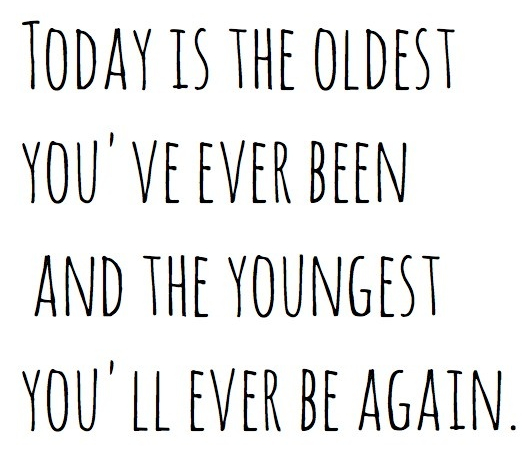
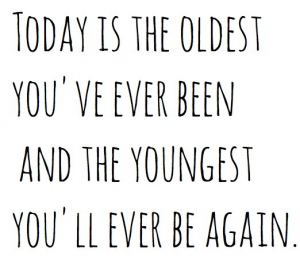
I completed a 1/2 ironman with less than 2 weeks of training. So, I ended up writing a book about it, only to chop it up and sell the parts. The book How to Crush a 1/2 Ironman in Less Than 2 Weeks was a few weeks from completion when I realized, who is going to read that book?!? I went totally overboard with the book- So, I immediately got to working on the next book to cater to every corporate athlete. Title- NO ONE Gets There Alone. It was painful.
In order to complete a 1/2 ironman with less than 2 weeks of training, I needed to develop my “why.” Just like you, I had excuses, but did not choose to use them. I focused on my excuses and turned them into my actual reasons why!
Turn Your Excuses Into Your Reasons
“If we literally did all the things that what we were capable of, we would literally astound ourselves.”- Thomas Edison
All of us have head trash that consists of limiting beliefs that keep us from our true potential. We hold onto old ideas like they actually help us, and we do this because it is more comfortable than exploring our true possibilities and developing new patterns of thinking. It is difficult and uncomfortable to combat the old ideas that we “can’t do something.” It is far easier and less taxing mentally to simply hold onto limiting beliefs.
An old idea could be “there is only one winner, and everyone else is a loser.” It’s a comfortable belief and can be effective, but it comes from a source of scarcity (there’s only one winner, so it’s me vs. everyone) rather than abundance (I’m confident I’ll reach my goals, who can help me and how can I help others?)
If we look for excuses not to something, we will find them; however, if we search for reasons to do something, we can find those instead.
These excuses and limiting beliefs always involve people, places, or things.
We grasp onto the times that we failed and were embarrassed and allowed those moments to define our identity. We focused on our deficiencies rather than our strengths. Or we compared ourselves to someone else who was better than us.
Most of the negativity is about not being good enough to do something, which allows us to then create excuses for not being good enough.
It’s a vicious negative cycle.
So, we play it safe and avoid taking the necessary risks for success. The reality about life is that we don’t get credit for being safe! The only way to find out what we are capable of is to take a chance, go for it, and just do it. The scary and difficult part about taking chances is it means challenging our old ideals that have kept us safe.
Each of us has a story with experience, strength, and hope. We all have excuses why, and the tough part is to be able to identify these excuses and use them to our advantage. We need to be able to use our limiting beliefs and turn them into our empowering reason, our why.
We will have an excuse or a reason. The excuses exist for a reason; they are there to see who really wants it.
Here are four common excuses, mine included. At the same time, all of my excuses became my reasons why.
Excuse #1: Time
We are either wasting time or investing time. It is the most precious resource!
Time is the number one excuse for not starting. Discipline is the number one excuse for not continuing.
Yes, time is the biggest limiting factor, but it also is an excuse. We all have the same number of hours, if we don’t create the time for ourselves, then we simply do not want it bad enough.
We either make time, or we make an excuse.
Can we examine our actual time commitment? Are we hiding behind our kids schedule, our spouses’, weekend drop-offs, work, or is it that we are just too tired? Do we waste time on netflix ® binges or making sure we watch the big game?
John Grisham would write in the early morning before starting his day job as an attorney in the courtroom. It took him four years to write his first best seller, A Time to Kill.
A friend of mine preparing for a race would get his long run in on the way to and from both of his kids’ weekend soccer games.
It is about making time and getting creative with our lifestyle.
In my life, time was an excuse as well. I’m a business owner, husband, father of two, golfer, and I travel a lot with my athletes and teams, so making the time to train for a ½ Ironman was difficult.
In order to do your best at ½ Ironman or Ironman distances, 6 months to a year of training is ideal. I hadn’t previously signed up for longer races before because training for a ½ Ironman for six months wasn’t appealing. I didn’t want it bad enough.
Now, time was a major factor to prepare because I only had two weeks to train. It could have been a good excuse.
Reason Why #1: Time
Time in my case became an advantage!
If time was an excuse for not doing the race, I realized that I could devote less than 2 weeks to prepare for a ½ Ironman. My focus and life could accommodate this challenge. My first excuse turned into my why.
Excuse #2: Fear
Remember as a kid when coach would tell us that if the baseball hit us, it wouldn’t hurt? LIE! It hurt, and my broken nose can attest to that fact.
Well, I’m not going to lie here either because attempting your goal will hurt. But, that is actually what makes it great as well. If it were easy, then everyone would do it.
If we don’t commit to setting a goal, then we will not fail. Boom; problem solved! However, it also ensures that there is no way we will become who we want to become or crush our goals.
We then create a habit of not committing, or starting something, but never finishing.
My second excuse was fear. It was an unknown if I could finish the race or not get injured. But I was also scared by the commitment it takes for successful races. I’ve accomplished marathons, half-marathons, Masters swimming, and the random road 5k or 10k, here and there.
I’ve also trained with elite athletes and I’ve see those people who simply kill the workouts and crush those types of races. I’ve also worked with professional athletes. The mind-set, the dedication, and the attention to detail are paramount. It takes a lot of sacrifice both individually and family- wise. Having been a part of that culture, I know full well what it takes.
They are all-in!
These professionals are what the pig is to breakfast, while I was more of what the chicken was to breakfast. See, the chicken is invested in breakfast by supplying the eggs, but the pig is fully committed by providing the ham or bacon.
Reason Why #2: Commitment
While I realized the sacrifice and dedication necessary for greatness, my goal was important; finish. Heck, at least the chicken still contributes to breakfast. I know the intricacies about what it takes to compete. I could do this. All I have to do is commit and just keep moving.
Part of the fear exists because we allow an “out.” When we burn the ships, we make the commitment.
Excuse #3: Expectations
Tiger Woods used to say, “ I expect to win the tournament.” Expectations are not confidence, but we confuse the two. Expectations and confidence are just cousins.
We can have confidence in the things we can control, but we hold no control over how we want things to work out.
Expectations are out of our control and often involve other people’s opinions of ourselves. They also turn into tomorrow’s resentments. Continuing to have the highest of expectations means we will struggle when we have to mentally trouble-shoot and reboot.
We basically only control, our effort, our attitude, our confidence, and how well we let of mistakes and re-focus.
While I haven’t been willing to commit the vast amount of time to training for a 1/2 ironman, I also suffer from a disease called “just don’t suck.”
This attitude of “just don’t suck” is actually a cousin to perfectionism. I don’t have to be perfect at things, but I find it unacceptable to not be “good” at everything. It’s the reason why I play chess, ping-pong, golf, poker, run, swim, ski, write books, and can play most any sport.
The obsession drove me to accomplish some okay athletic activities (back in the day), like running a sub 20:00 5k, breaking 1:00 in the 100 Freestyle, bench pressing 300 lbs, completing a marathon in 3:20, making a hole-in-one, and completing a tough mudder.
However, the “don’t suck” disease is also the reason why I have never been the best at any one of these skills. My attention, passion, and intention get drawn toward other endeavors. You can’t be the best at one thing, if you’re trying to be the best at everything.
That’s insanity.
That’s the disease.
Why #3: Past Performance
How do we know that we can do something? We’ve done “it” before. Our experiences no matter how small must serve as confidence, not build expectations. There is only one expectation for the race, just keep moving.
My past experiences of having raced and competed before have served as reasons why I could finish a ½ Ironman in less than 2 weeks.
My Excuse #4: Age
Every Thanksgiving, as a family, we run in a local 5k and I not only got smoked in my workouts leading up to the race, but I was also passed in the 5k race by a guy who was having knee surgery immediately after the race. This was a guy I went to the gym with and so I knew about his injury.
That sucked. Was I really getting that old?
Also, my body has started to break down on me. I’ve always had back issues since my near death experience of falling off of a cliff. Now, my knee pain has gotten progressively worse and it hurts walking up stairs sometimes. I’m much more sore nowadays.
My age was an excuse for not signing up.
Why #4: Age
We have never been older than today and we will never be any younger than today. None of us are getting any younger.
Before the movie, The Bucket List, was released, I wrote out 100 things I wanted to do before I die. As a former college professor, I would have all of my students perform this goal as well.
Complete a full Ironman was on the list.
Since nothing is guaranteed in life and tomorrow certainly isn’t, I asked myself, “if not now, when?” “If not you, then who?”
My age now became my why, if not now, then when?
Most likely your “½ Ironman” is a different challenge altogether. Maybe it is running a 5k, writing a book, hiking the Appalachian Trail, losing 10 pounds, finishing your Masters degree, or becoming a professional in your field. Whatever your goal is going to be, building mental toughness will be key.Mental toughness will be the deciding factor in our success.
For everyone, these struggles are different.
What is interesting is that we do not need to be mentally tough in order to be comfortable in today’s society. We are already comfortable in our lives, so there is not always an immediate need to push ourselves.
However, we don’t thrive in mediocrity; we survive.
Dr. Rob Bell is a Sport Psychology Coach. His company DRB & associates is based in Indianapolis. Some clients have included: Indy Eleven, University of Notre Dame, Marriott, and Walgreens. Check out all the books on Mental Toughness
July 28, 2017
If You’ll Watch 1:00 Minute Mental Toughness Video for Sport Parents- Watch This

1-Minute of Mental Toughness for Sport Parents-
Here are three (3) tips that will help you help your young athlete!

Check out the book ON SALE Don’t Should on Your “Kids” Build Their Mental Toughness
A change has occurred — youth sports have been professionalized and there has been a perversion of potential. It has become scholarships over development, trophies over toughness, and talent over tenacity.
The professionalization has created an environment of externally driven, perfectionist, and stressed competitors. Parenting athletes also require such a vast amount of sacrifice both emotionally and financially.
Are we doing it correctly as a sport parent?
Dr. Rob Bell is a Sport Psychology Coach. His company DRB & associates is based in Indianapolis. Some clients have included: Indy Eleven, University of Notre Dame, Marriott, and Walgreens. Check out all the books on Mental Toughness
July 7, 2017
Top 7 Mental Toughness Books of 2017 (So Far)

Top 7 Mental Toughness Books of 2017 (So Far)

 When No One Was Watching- Carli LLoyd
When No One Was Watching- Carli LLoyd
I always enjoyed watching her compete for the US Women’s Soccer team. You could see her passion and effort in her play. Besides, she had one of the coolest goals of all time from mid-field no less. This story discusses the long journey for her and her super-intense work-ethic. She was always passed over and that is what drove her to be successful. My favorite line from the book- If you empty the bucket in practice, it’ll never be empty for you in the game.
Probably one of the most sickest feats in all of sports! Swimming from Cuba to Florida Keys. Over 110 miles and over 50 hours of non-stop continuous swimming fighting off boxed jelly fish, sharks, hypothermia, you name it. She began this epic journey when she was 25 years old, but completed it on her fifth attempt at the age of 64. Her mantra- you guessed it “Find A Way.”
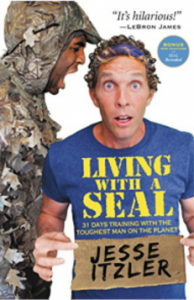 Living With A Seal- Jesse Itzler
Living With A Seal- Jesse Itzler
Any book that makes you want to tweak your own work-out is a perfect one for me. A hilarious, yet inspiring story about how A Navy SEAL came to live with Jesse and his wife Sara Blakley (founder of spanx). It is a no-nonsense book on simply getting better and the entire mission is about getting better every single day. “Seal” trains Jesse with such an extreme vigor that there is frankly little time or regard for anything else in life. Jesse a marathoner to begin with ends up performing feats he didn’t think he’d do and getting tougher in the process.
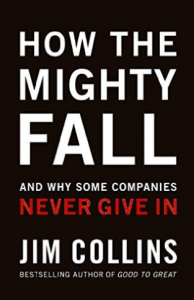 How the Mighty Fall- Jim Collins
How the Mighty Fall- Jim Collins
I thought Good to Great was well, great. This book made the top 7 mental toughness books because in many ways, this book was even better than Good to Great! One of the lines from the book is all successful teams are successful the same way, all unsuccessful teams fail in their own way. It delves into the five stages of how the mighty businesses simply failed. This book is a must read for any coach, entrepreneur or c-level executive. It is an extremely fast read, so be prepared to read it twice for steps your business can take to avoid the downfall.
There is something truly special about a coach. A coach is someone who takes you someplace that you want to go. Siri is known as one of the best triathlon coaches in the world. This biographical account begins with her childhood, the hinge moment of competing in triathlons and her epic international wins and place atop the sport. Her story also includes her courageous act of coming out as gay and her journey of transitioning into coaching. An excellent read for any coaches or athletes.
The story of the all-blacks! What the All Blacks can teach us about the business of life. It’s a must read for ANY LEADER. How you develop leadership, ownership, and accountability. Basically, can you leave the jersey in a better place than how you found it, because Better Men make Better All Blacks!
 The Mindside Manifesto- Dr. Bhrett McCabe
The Mindside Manifesto- Dr. Bhrett McCabe
“Manure may not be pleasant, but before fertilizer, it was the go-to solution for crops. So for growth to occur, success has to push through layers of crap.” Love this line amongst all of the nuggets of training the mental game and developing a competitive mindset. I’ve known Dr. McCabe for several years now through the PGA and web.com tours and we agree on many aspects of the mental preparation. Except, he takes it way beyond general sport psychology books in challenging the reader to create your own manifesto. This book makes my list for the top 7 mental toughness books. A solid read for athletes.
Dr. Rob Bell is a Sport Psychology Coach. His company DRB & associates is based in Indianapolis. Some clients have included: University of Notre Dame, Marriott, and Walgreens. Check out all the books on Mental Toughness
June 23, 2017
You Can NEVER Do This Before An Important Competition

You Can NEVER Do This Before An Important Competition
I was at an expo for my second ever marathon. I tried to get in and out of these expos very fast and off of my legs. However, I came across (and bought) these super lightweight sunglasses. They were sweet! The glasses that I had been training with were heavier, so I decided to run with these new ones during the marathon tomorrow.
I mean how different could sunglasses actually be?
Well about two miles into the 26.2-mile race, my brand new super awesome, lightweight sunglasses began to fog up. I tried everything I could, but they were completely useless most of the day. I had to put them on top of my head, but hey I did get to put them back on for the finishing pictures, so at least the cool factor was there (like that matters).
It’s sad to see too many athletes at all levels simply not have a solid, bulletproof routine, which unfortunately allows more variables (like mood) to affect their performance before an important competition.
Professional actors have dress rehearsals for all-important competitions, so practice your routine. Advising that you don’t change anything on race day requires that we train how we are going to perform. We perform like we train!
A pre-performance routine means that you have set up the actions that you like to do before your performance. But, the physical actions are the easy part! There is no one size fits all for pre-performance routines.

The perfect routine is one that gets you mentally prepared and physically dialed-in for your performance. Staying calm and relaxed before any important competition is the goal.
“The goal is to be physically loose and mentally tight”- Arthur Ashe
Dr. Rob Bell is a Sport Psychology Coach. His company DRB & associates is based in Indianapolis. Some clients have included: University of Notre Dame, Marriott, and Walgreens. Check out all the books on Mental Toughness

June 9, 2017
Your Three Selves of Mental Toughness


Your Three Selves of Mental Toughness
People have talked about near death experiences and how their life flashed before them, and I’ve had two near death experiences, which were falling off of a cliff and a car accident, but my life never flashed before me.
Before I signed up to compete in a ½ ironman in less than 2 weeks, my life was shown before me.
We all have our own experiences, setbacks, shortcomings, hang-ups, and doubts. But, we also all have our own mental toughness, successes, motivation, level of fitness, and accomplishments.
Too often, we only focus on the excuses and limitations why we can’t do something. These limitations are usually focused on our deficiencies and proof of how we aren’t good enough. They are always rooted in the past as well.
Before embarking to crush any goal or big decisions, you’ll look at your past, your present, and your future. Where have you been? Where are you now? And where are you going?
Our Past Self
A funny thing about confidence it that there is a nosy neighbor with confidence named doubt. Wherever doubt lives, it does so, rent-free. Doubt is a squatter!
Wherever doubt lives, it does so, rent-free. Doubt is a squatter!
Click To Tweet
Doubt always wants to hang out with confidence, but they simply don’t get along well. However, that doesn’t keep doubt from following confidence around wherever confidence goes.
It’s best to keep doubt as a neighbor rather than a roommate.
Everyone has doubts, even the best. This is normal, so just know that it is okay. What’s more important than the doubt entering your mind is that you determine how long you want to hang around with doubt. Do not allow the negative thoughts to stay around long right beside your confidence— rent-free.
The number one source of confidence is past performance. If we have done something before, then we can do it again. However, again, next to confidence is that awful roommate, past performance can also cause doubt.
Chances are that we have failed before. The failure provided feedback and an emotional connection to the pain. Perhaps that one failure or setback was so painful that it kept us from trying other challenges?
Or when we look back at our past self, maybe we see someone who has started things and journeys, but never really followed through or completed them.
Yes, you’ve had setbacks in your past, so what? Do you still let that event define you, or refine you? Does our past define who we are currently?
The answer is: only if we let it.
There’s one major question that we need to look at that will help determine our chances for success.
The question for your mental toughness is: Did you push yourself?
I believe that if you actually enjoyed working hard and pushing yourself (even if only a little bit) then you have what it takes to crush your goal.
I believe that everyone has the will to succeed; they just sometimes need the way.
If the past doesn’t provide the confidence and proof that you can crush your goal in two weeks, then merely don’t let it try and convince you that you can’t do something.
I’ve never competed in a ½ Ironman, so did my past provide the confidence I needed to finish the ½ Ironman with no training?
One of my strengths in my past has been the ability and drive to set a goal and reach it. I’ve run in a number of races before and have trained extensively for these. Some of my meager, yet personal accomplishments included a sub 20 minute 5k, a 3:23 marathon, a tough mudder, and a handful of ½ marathons and 10k’s. For a few years I also trained in the pool and managed to break 1:00 barrier in the 100 Freestyle. Since having kids, running my own business, and working with athletes, my priorities changed. Oddly, these races often felt like another lifetime ago.
Again, our past may not always provide the confidence we like. However, one major setback and lack of confidence for me that I could not let define me was the bike. The reason I hadn’t signed up for these types of races previously is because of the bike. I biked as a kid all the time, but not as an adult. Heck, I didn’t even own a bike and haven’t ridden one in ten years. My past contained also a level of doubt.
Our Present Day Self
Next, we will have to check-in with and assess our present day self.
Motivation lives here. The grind lives here- in the present.
Click To Tweet
Motivation lives here. The grind lives here- in the present.
Your present day self is fraught with obstacles and distractions. Most of these keep us comfortable. The difficulty will be to answer and take action on the following questions:
Do we possess the will to go for it? Are we willing to put forth the effort and sacrifice to get it?
These are the questions that only you can answer.
Could I finish the ½ Ironman? Would I injure myself? And more importantly, did I want to do it?
Assessing my present day self raised more questions than answers about the race.
More current self revealed I was not in any type of racing shape. My runs were maybe three times a week averaging 3/4 miles a run, and my swimming has been limited to maybe 1x a week. I still worked out five days a week and either ran, swam, or strength trained, but with no immediate goals. Working out was for fitness, sanity, and fun.
Our Future Self
We become whatever we are becoming!
Click To Tweet
We become whatever we are becoming!
Our goals are to improve 1% everyday. If we focus on being just 1% better everyday, then we improve dramatically over a span of time.
One of the toughest things is being able to come up with a vision of who we want to become. Not what, but who? I want to become someone with no regrets and in the game. I don’t want to sit on the sideline of life and not go for it.
I once wrote down a list of 100 things I wanted to do before I die. Complete a full-Ironman was on this list. However, a ½ Ironman wasn’t on there. It was a mistake on my part because when writing down goals, most want to be President, but who wants to be Vice-President? I also have an extreme love for my kids. I want to constantly model for them the importance of having a vision and the mental toughness to execute it.
Oddly enough, my future self may have been the biggest driving force for me signing up. It helped me answer the questions of: Could I do it? Yes, (I think so). Would I injure myself? (I don’t know). Did I want to do it? Yes, (I think so).
Dr. Rob Bell is a Sport Psychology Coach. His company DRB & associates is based in Indianapolis. Some clients have included: University of Notre Dame, Marriott, and Walgreens. Check out all the books on Mental Toughness
June 2, 2017
Is Tiger Woods a Great Example of Mental Toughness?



Is Tiger Woods a Great Example of Mental Toughness?
“Mental toughness is more about what takes place off the field than on it.” — John Wooten
Click To Tweet
“Mental toughness is more about what takes place off the field than on it.” — John Wooten
Kareem Abdul-Jabbar was asked at the end of his Hall of Fame career, when he had his number retired, who was the best player he ever played against?
Considering he played against some pretty awesome NBA’ers, the answer should have been a good one.
Except, Kareem paused and then answered, “Well, it would have to be ‘The Goat.’”
He was referring to Earl Manigault.
The Goat was a player who honed his talent on and off the streets of Harlem at the famous Rucker Park.His talent level was legendary as well, at 6’2″, he would jump and pick quarters off the top of the backboard, and once even won a $60 bet by reverse dunking 36 times in a row.
He was not cursed with lack of desire or commitment, because he would practice hundreds of shots every day, even practicing with ankle weights on. It was what took place OFF of the field that ultimately mattered more…
Earl often smoked marijuana and got kicked out of his high school for an infraction. He played basketball in college, destined for greatness, but he struggled with the coach and was released from the team.
When he was back on the streets of Harlem, he slowly faded and began using heroin and ended up serving jail-time. That is why everyone knows Kareem Abdul-Jabbar, but no one knows Earl Manigault.
Is Tiger Woods a Great Example of Mental Toughness? Look, NO ONE was better on the course than he. Just google Tiger Woods and Mental Toughness and you’ll get pages and pages of examples from his playing days.
At his peak playing days in the early 2000’s, Tiger Woods was so dominate that the most under-rated golfer was Tiger. NO OTHER athlete has transcended a sport like Tiger Woods did golf. Tiger Woods a great example of mental toughness on the course, but off the course is a different story.
Just because people have it “all” doesn’t mean they don’t still battle with demons. The better we become, the more important mental toughness becomes out of our office.
“You can’t build a great building on a weak foundation. You must have a solid foundation if you’re going to have a strong superstructure.” – Gordon B. Hinckley
Dr. Rob Bell is a Sport Psychology Coach. His company DRB & associates is based in Indianapolis. Some clients have included: University of Notre Dame, Marriott, and Walgreens. Check out all the books on Mental Toughness
May 25, 2017
All Champions ADJUST Find A Way


All Champions ADJUST Find A Way
In the fall of 2008, a 47-year-old businessman, divorced father of four went to his crack dealer. He was on a fourteen-day binge and was so bad off that his dealer actually refused to sell him any more until he got some sleep. It was this man’s low point.
After one final party binge about a year later, Michael Lindell quit alcohol and drugs. A success story in itself, but more impressive is that he grew a business empire from a drawing he sketched on his kitchen table.
One early morning after a night of pitiful sleep, he drew a sketch of a pillow with all sizes of foam that could be adjusted however a person would desire. He told his daughter “I’m going to create the worlds best pillow.” That evening MyPillow was created.
The journey for Lindell was not smooth, as his business since 2011 oscillated from extreme growth and successful infomercials to hemorrhaging money. At one point, he owed $30,000 to a fabric manufacturer with only a few days to pay or MyPillow would be forced to shut down. It was only after a chance meeting with an individual that was he able to get a meeting with investors and get the $30,000 loan with no collateral. He paid the manufacturer with just hours to spare.
MyPillow has become one of the top five telebrand products and has sold more than 26 million pillows with a workforce over 1,500 people. Michael Lindell’s dream is to become a $1 billion dollar company.
It’s not about the setback; it’s about the comeback!
A boat is off course 99% of the time. The way that a sailboat finds its destination is by tacking. A series of zigzagging maneuvers by a sailboat adjusting the sail back and forth to use the wind. Adjusting is how sailboats reach their final destination.
That’s how champions adjust. They just keep moving, making minor changes and course corrections…
Click To Tweet
That’s how champions adjust. They just keep moving, making minor changes and course corrections along the journey.
One of the amazing things is that once Michael Lindell, now a Christian, shed his demons, he remained devoted to his own style and vision. His own infomercials and personality became a huge part of MyPillow appeal.
In all areas of life, champions adjust find a way.
Mental Toughness isn’t needed when things are going great. It is needed most when bad outcomes are happening, we are stressed and things are going wrong. How do we respond and adjust?
This is Just ONE way to Build Mental Toughness. If you are interested in learning more Mental Toughness Techniques. Check out RING THE BELL FOR Mental Toughness.

Dr. Rob Bell is a Sport Psychology Coach. His company DRB & associates is based in Indianapolis. Some clients have included: University of Notre Dame, Marriott, and Walgreens. Check out all the books on Mental Toughness-
May 12, 2017
You’ll Need This Skill to Compete in Golf at The Next Level.


Play golf at the next level? Take this skill with you!
The short game in golf won’t win anyone a championship, but not having a strong short game will lose it for you. The shots inside of 110 yards give or take (pitching, chipping, and putting) will make all of the difference in your ability to play golf at the next level.
I spend the majority of my days involved with all different sports, even though golfers are most of professionals. So, stay with me on this analogy, but the short game in golf is just like rebounding in basketball.
If you have a team that rebounds effectively, on offense, they give themselves extra scoring chances and most of these are high-percentage shots. A team that is an excellent defensive rebounding limits teams to one shot, thus keeping their opponent’s score down.
There are days offensively in basketball where the shots just do not fall; that’s basketball. BUT, if there is a team that crashes the boards, the law of averages states that those EXTRA shots eventually start to go in.
The short game in golf is like rebounding, because if you can get up & down 70% of the time and make 70% of your putts inside 10 feet. Then you’ll have the skill to compete in golf at the next level.
The short game in golf is DIRECTLY tied with the mental game. At the pro level, it might not be the #1 predictor for success, but it is the engine of momentum. Saving par can provide momentum, or that ill-timed three putt, can crush it.
Some days your swing just won’t be there and you’ll miss greens. What will matter will be your ability to find a way and still get it in the hole. Getting up & down and saving par accomplishes you staying in the game. AND when those rounds happen when you are on your game and hitting 14 greens, getting up & down keeps your score low rather than throwing away your birdies.
So what does it take to be a great rebounder? The same skill it takes to have a great short game.
It’s all about mindset and attitude. It takes heart and passion. It boils down to how bad do you want the ball? Because great rebounders NEVER ask “was that my ball?”
Because great rebounders NEVER ask “was that my ball?”
Click To Tweet
The short game in golf is also about how bad do you want it? Are you willing and disciplined enough to wear out this part of your game? You have to want success bad enough that you’re willing to do the things you simply don’t want to do. That’s the mental skill needed to play golf at the next level.
YEAH BUT!
Trust me, coaches hate to hear that phrase from their athletes.
Majority of players don’t want to work on rebounding and the short game because they are NOT sexy!
Hitting the ball further is sexy. Carving a 6-iron in to a tight pin is sexy.
But, your time is finite. You’ll have to devote your effort and energy towards becoming great at one part of your game. Hopefully, it’s saving shots!
Have you ever heard a coach say “we REBOUND the basketball too well?” No, just like you’ll NEVER hear a golfer say ” I work too hard on my short game!”
Dr. Rob Bell is a Sport Psychology Coach. His company DRB & associates is based in Indianapolis. Some clients have included: University of Notre Dame, Marriott, and Walgreens. Check out all the books on Mental Toughness-
May 1, 2017
The First Step to Absolutely Crush ANY Race
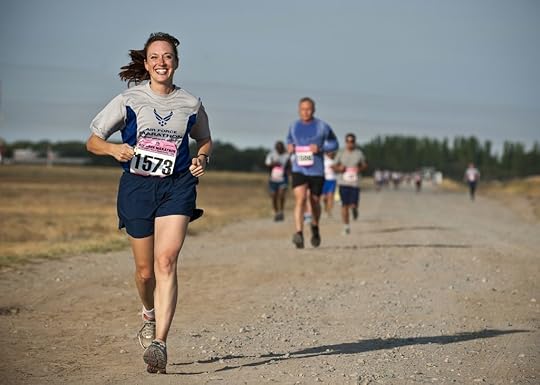

The first step to absolutely crush any race
Our preparation matches our commitment.
This is the first step to crush any race is actually quite simple. It is so simple in fact, that it rarely gets mentioned as a possible barrier, but I have used it as a barrier and so have most people.
It’s signing up!
If we don’t go all-in then we are in the way. And we remain testing ourselves .
When we sign up for the race, we are now training ourselves for the event. It is a lot tougher to de-commit to something after we have invested time and money. We prepare because we are committed to race.
The sign-up page for races is a science. It stares at us with a timer clicking down and asking us to enter our information and our payment details. It is at this moment that the game is sometimes won or lost. It is like waking up in the morning and either hitting the snooze button, or just getting out of bed.
The many, many excuses about “why” we can’t sign up are most likely valid as well. But, after we sign up, the entire game changes. It is odd how our whole attitude and outlook changes the moment we sign-up for something, the moment we actually commit.
However, if we don’t sign up, we continue testing ourselves. Commitment is the first step to crush any race.
Burn The Ships
In 1519, the Spanish explorer, Cortês arrived to the Yucatan peninsula. He landed his 11 or so ships with 500 soldiers and about 100 sailors. He then ordered his men to “burn the ships.”
He did this because there were a few men who were rumored to be conspiring to steal a ship and sail back to Spain. Cortês knew the only way they were going to conquer was if they had no other choice but to conquer. If they wanted to return home, then they would have to use their enemy’s ships. Cortês needed everyone committed to the goal without reservation or chance of retreat. He allowed no easy out.
registration sites for races now have developed an ingenious way of separating you from your money.
Click To Tweet
This “burn the ships” analogy is important because the registration sites simply offer you an out, a guarantee.
They offer you an option to recoup your entry costs (for a fee of course) if you cancel. At first glance, we may think that it is a great deal; I mean what if I get in a car accident a few days before or tear a hamstring?
Surely, being able to guarantee that I don’t lose money is good. Except, it is not. First, if you look closely, in order to retrieve most of your money you’d have to bail several days before.
If the race is less than a week away in most cases, your race costs won’t be refunded. Second, and most importantly, these race guarantees are appealing because we are geared toward protecting ourselves and avoiding danger. So, we mistakably choose the path of less resistance. If there is an out for us to take, we will take it. However, when there is no safety option for us to take, it forces us to commit.
Registering is the first step to crush any race. The only way out is through. When it comes to signing up for a race, burn the ships.
This is Just ONE way to Build Mental Toughness. If you are interested in learning more Mental Toughness Techniques. Check out RING THE BELL FOR Mental Toughness.

Dr. Rob Bell is a Sport Psychology Coach. His company DRB & associates is based in Indianapolis. Some clients have included: University of Notre Dame, Marriott, and Walgreens. Check out all the books on Mental Toughness-
The first step to absolutely crush any race


The first step to absolutely crush any race
Our preparation matches our commitment.
This is the first step to crush any race is actually quite simple. It is so simple in fact, that it rarely gets mentioned as a possible barrier, but I have used it as a barrier and so have most people.
It’s signing up!
If we don’t go all-in then we are in the way. And we remain testing ourselves
When we sign up for the race, we are now training ourselves for the event. It is a lot tougher to de-commit to something after we have invested time and money. We prepare because we are committed to race.
The sign-up page for races is a science. It stares at us with a timer clicking down and asking us to enter our information and our payment details. It is at this moment that the game is sometimes won or lost. It is like waking up in the morning and either hitting the snooze button, or just getting out of bed.
The many, many excuses about “why” we can’t sign up are most likely valid as well. But, after we sign up, the entire game changes. It is odd how our whole attitude and outlook changes the moment we sign-up for something, the moment we actually commit.
However, if we don’t sign up, we continue testing ourselves. Commitment is the first step to crush any race.
Burn The Ships
In 1519, the Spanish explorer, Cortês arrived to the Yucatan peninsula. He landed his 11 or so ships with 500 soldiers and about 100 sailors. He then ordered his men to “burn the ships.”
He did this because there were a few men who were rumored to be conspiring to steal a ship and sail back to Spain. Cortês knew the only way they were going to conquer was if they had no other choice but to conquer. If they wanted to return home, then they would have to use their enemy’s ships. Cortês needed everyone committed to the goal without reservation or chance of retreat. He allowed no easy out.
This “burn the ships” analogy is important because most registration sites for races now have developed an ingenious way of separating you from your money.
The registration sites simply offer you an out, a guarantee.
They offer you an option to recoup your entry costs (for a fee of course) if you cancel. At first glance, we may think that it is a great deal; I mean what if I get in a car accident a few days before or tear a hamstring?
Surely, being able to guarantee that I don’t lose money is good. Except, it is not. First, if you look closely, in order to retrieve most of your money you’d have to bail several days before.
If the race is less than a week away in most cases, your race costs won’t be refunded. Second, and most importantly, these race guarantees are appealing because we are geared toward protecting ourselves and avoiding danger. So, we mistakably choose the path of less resistance. If there is an out for us to take, we will take it. However, when there is no safety option for us to take, it forces us to commit.
Registering is the first step to crush any race. The only way out is through. When it comes to signing up for a race, burn the ships.
This is Just ONE way to Build Mental Toughness. If you are interested in learning more Mental Toughness Techniques. Check out RING THE BELL FOR Mental Toughness.

Dr. Rob Bell is a Sport Psychology Coach. His company DRB & associates is based in Indianapolis. Some clients have included: University of Notre Dame, Marriott, and Walgreens. Check out all the books on Mental Toughness-







